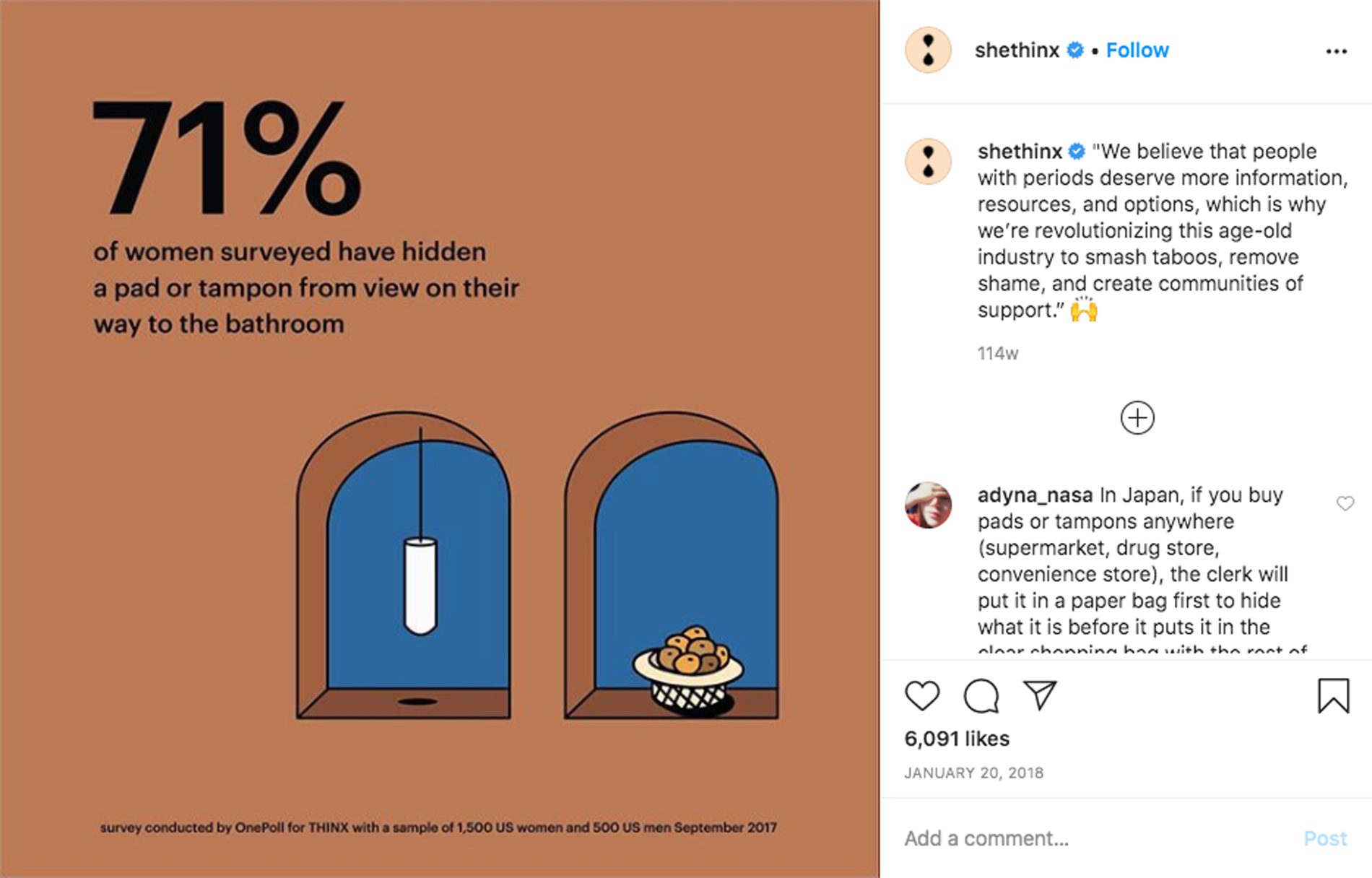Why Neglected Audiences
Matter, and How to Target Them?

The 21st-century brands are expected to be close to people, rather than consumers. Furthermore, brands should be more like humans at their best — but today, that also means taking on greater responsibilities.
In the time of post-recession, post-democracy, post-demography, post-truth, and post-labor, matters like inequality, security, sustainability, identity, diversity, and community become issues of public interest, relevant for all participants in the on-going exchange of goods and values. Brands are especially challenged to show and prove how much they care and how farsighted they are. Moreover, they’re called on to bravely take the first steps and tap into the opportunities of post-advertising.
Challenging the status quo
Brands and companies are nowadays expected to use their profit, resources, technology, processes, and values more actively and purposefully, and in favor of systematic initiatives and innovations that can phase out various restrictions which the existing and potential users face. The value lies in actions of significance that lead toward the satisfaction of growing and long-term needs, both in individual lives and within a broader spectrum of shared experiences.
Among other things, this brings forth the need to focus on market segments and realities of the “neglected”, who represent a significant portion of the world and are within areas of interests and experiences of those traditionally served. It becomes a necessity to service and satisfy the needs of the ones whom the uniform, conventional, reductionist targeting considered less profitable or relevant to be perceived as target audiences in the first place.
Although the official categorization is yet to be made and various sources use the following terms synonymously, the division identifying the three groups of neglected segments as the unserved, underserved, and unrepresented, potentially intriguing for businesses and communication thinking and ideation, appears to be appropriate both theoretically and practically.
The unserved
Although this term most commonly refers to the low-income population, unserved audiences also include other profiles, such as people with disabilities, residents of isolated rural areas, senior citizens, people living on welfare, and minorities. Basic demographic statistics and determinants can prove to be sufficient for mapping and addressing these segments, which, as it turns out, aren’t small, but are growing.
In Serbia today, for example, every tenth person lives with a disability, while every fourth endures on the brink of poverty. The implications of not treating their pressing needs can be extremely detrimental, both for these individual cases and our shared opportunities.
Serving the unserved
The initial question for approaching this segment may be: Which steps can a brand take to empower those who turned out to be marginalized or neglected in the practices of a particular market category?
A step forward into this vast and unpopular world of marginalized people and their communities is turning out to be the step out of the comfort zone for many, and a good opportunity for some new, different, more agile companies. Positive examples come from a surprising number of categories, from established companies to start-ups (including retail chains, e-commerce sites, fast food restaurants, banks, FinTech start-ups, and food, fashion, health and wellbeing brands).
In 2017, Amazon introduced a low-cost Prime membership for people relying on government food and cash benefits systems, offering various products and services. Similarly, Wal-Mart offered specific financial services to people who survive on scarce resources and remain out of commercial banking systems.

Campbell Soup Company has supported the “buy one, donate one” principle through an (invisible) investment in the Soul Food Project, and Sparrow telecommunications operator bases its brand strategy on the same idea, just like fashion brands Tom’s Shoes, Warby Parker, and Headbands of Hope do.
Another great example is the collaboration between numerous brands, institutions, and organizations which aim to empower marginalized groups and individuals to create more equal participation in the technology sphere. This leads to the creation of specifically oriented educational initiatives and clubs, like Code Fever, Code Like a Girl, Raise Me, and many others.
The underserved
Thanks to the breakthrough of identity policies, the constant development of new technologies, and all the effects of the Internet and networking, it turns out that we can find the audiences that have always been the most interesting for advertisers within the group of underserved users today. If we believed, in the time before digitalization, that these audiences were adequately and appropriately served, today we find out that they’re only partially understood and satisfied.
The availability of information, as well as everyone’s and anyone’s data, can now, more than ever before, inform and advance brands’ sensitivity to the complexity and multidimensionality of human realities, expectations, needs, and ways of establishing relationships. Just as in life, notions in marketing inevitably become more complex — and more interesting as well.
In this context, psychographic segmentation plays an important role: interests, personalities, different roles, views, values, orientations, styles, and priorities define affiliations with specific profiles, almost independently of demographics. Depending on the level and depth of the analysis, crucial gains can be new, more nuanced and different insights that open unoccupied market niches and drive ideas for advanced solutions, more inspiring brand narratives, and encompassing experiences.
Serving the underserved
The questions brands can ask themselves before entering this sphere may be: In what other ways can a brand be relevant in the lives of existing customers? Has the target user changed compared to one year earlier, and how? Who else can and should be addressed by brands? Can existing communications and offers authentically respond to specific, intact, currently important or emerging needs, and make the customer segment more satisfied?
How does a category look as a whole when perceived by someone who sees it from the other side? Which practices and behaviors can be taken over from entirely different industries?
This is an opportunity for brands to make unusual, but meaningful trips into other categories, as well as to conquer new territories within their own. There are many different examples in this sphere, and the most striking instances are precisely those that are perceived or felt as overcoming the outdated, stereotypical, predictable, passive or simply incorrect frames and assumptions in the placement of offers and messages.

For example, now there are brands that understand women who hate shopping, as well as women who ask for more accurate and responsible discourses and treatment in offers that concern health and beauty. There are brands that make choices for men who cherish themselves and their styles without embarrassment, as well as those providing tools and communities for women in business who demand more personalized and advanced fashion, financial, co-working, FinTech, and other solutions.
Also, today we have brands that aim to offer adaptability for seniors who use Airbnb or buy online, as well as solutions for teachers, parents, and entrepreneurs looking for opportunities to learn, collaborate and contribute to the overall competitiveness of local markets and communities.
The unrepresented
In cases of the previous two levels of neglected target groups, the key to improving products and services was the more direct availability of resources, tools, and choices tailored to meet different material, empirical, and learning needs.
At the level of the unrepresented segments, topics and fields for enhancing relevance and responsibility of brands concern all those sociological, cultural and political topics and aspects that can contribute to the development of needs of the “higher order”: Improving inclusivity and equality, actualization of the potential and rights of individuals and communities, as well as the availability of adequate exchange of information and knowledge.
This is a sphere for all those who feel stigmatized, forgotten, ashamed, excluded, unaccepted, unwanted or unrecognized, simply because they don’t fit in the dominant constructions of desirable, preferred, normal, comfortable, neutral, and similar. Therefore, the before-mentioned demographics and psychographics should be observed and activated where the struggle of dominant versus emerging and growing cultural movements and discourses takes place.
Serving the unrepresented
The fundamental question for brands that want to enter this sphere is: What are the burning socio-cultural, economic, and political issues and positions that the brand can and should support?

We see examples of global brands and campaigns dealing with these topics every year. The approach, therefore, isn’t new, but it’s good to be reminded that the opposition to regressive attitudes, norms, and discourses is always around, which makes this sphere open to everyone. The controversy and divisiveness in reactions in this context should be desirable and true indicators of the real relevance of a topic, as well as the depth of the tensions concerned.
Instead of a conclusion
The key expectation from businesses and brands in the 21st century is to find systemic and systematic methods for the processes of production and profit creation to work in harmony with essential and multiple social needs and interests in each segment.
If companies fail to do so, no responsible choice made by an individual or a target group can or will have any significance on a larger scale (and consumers know it). Also, any isolated brand’s leap toward pop-up CSR, CRM, and PR programs and image-philanthropic narratives will not make sense to users and the real world (which brands’ consumers already think, and they’ve been signaling it for a long time).
Methods to reach the goal and satisfy real people and their needs are diverse and interconnected, and some basic steps to take could be:
• Accepting that brand responsibility is created from the foundation, from production processes, through recruitment, organizational and business culture, to the creation of offers and communications;
• Developing sensitivity to the expressed and unspoken needs of people and markets by affirming the ability to decentralize, review, and enrich the established research and planning methods;
• Overcoming vanity and procedural barriers and creating a space for association and collaboration between corporations and brands, as well as state systems and companies;
• Understanding that “thinking big” means improving the world and the market, and not (just) marketing.
Welcome to the world of new challenges.
***
Written by Katarina Jovanović, Head of Planning and Research at April Studio.
Translated and adapted by Dunja Sretović, Content Strategist at April Studio.
The article was originally published in March of 2018 on Marketing Mreža.